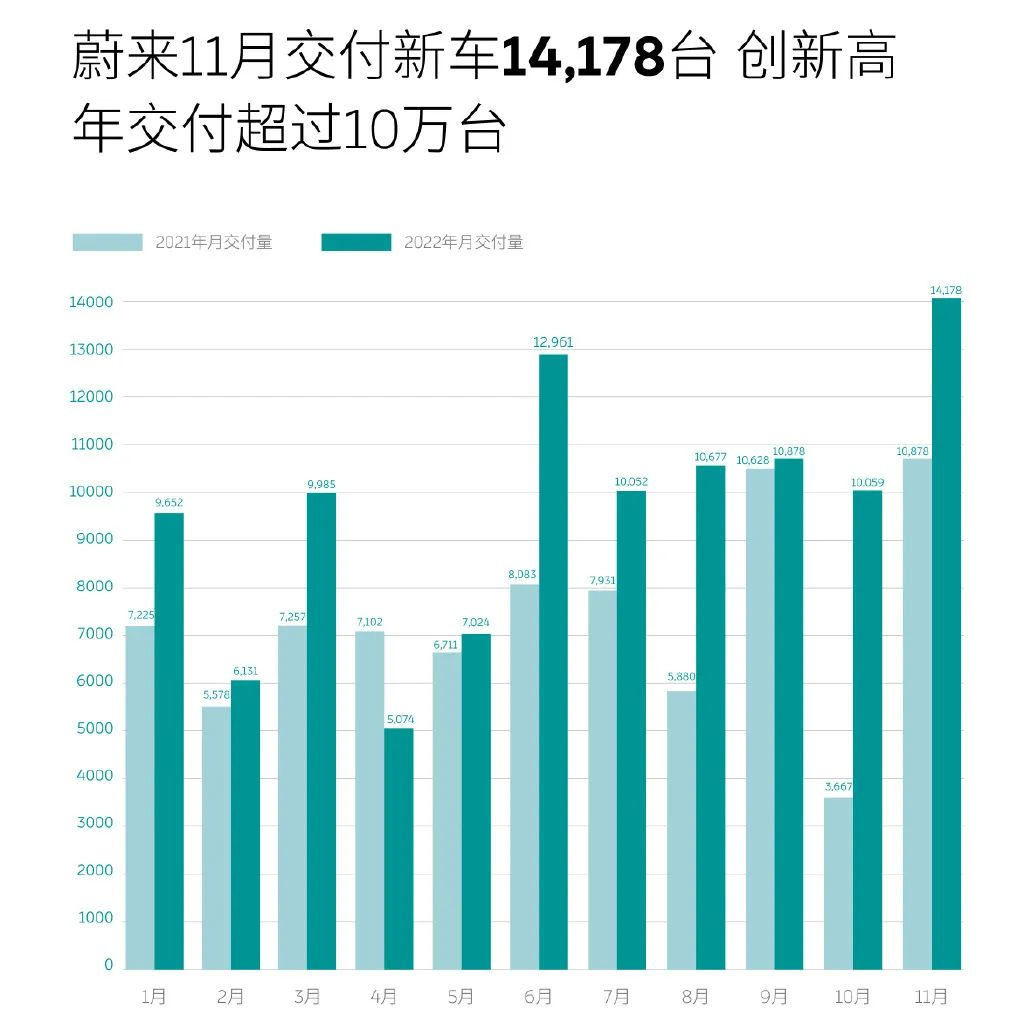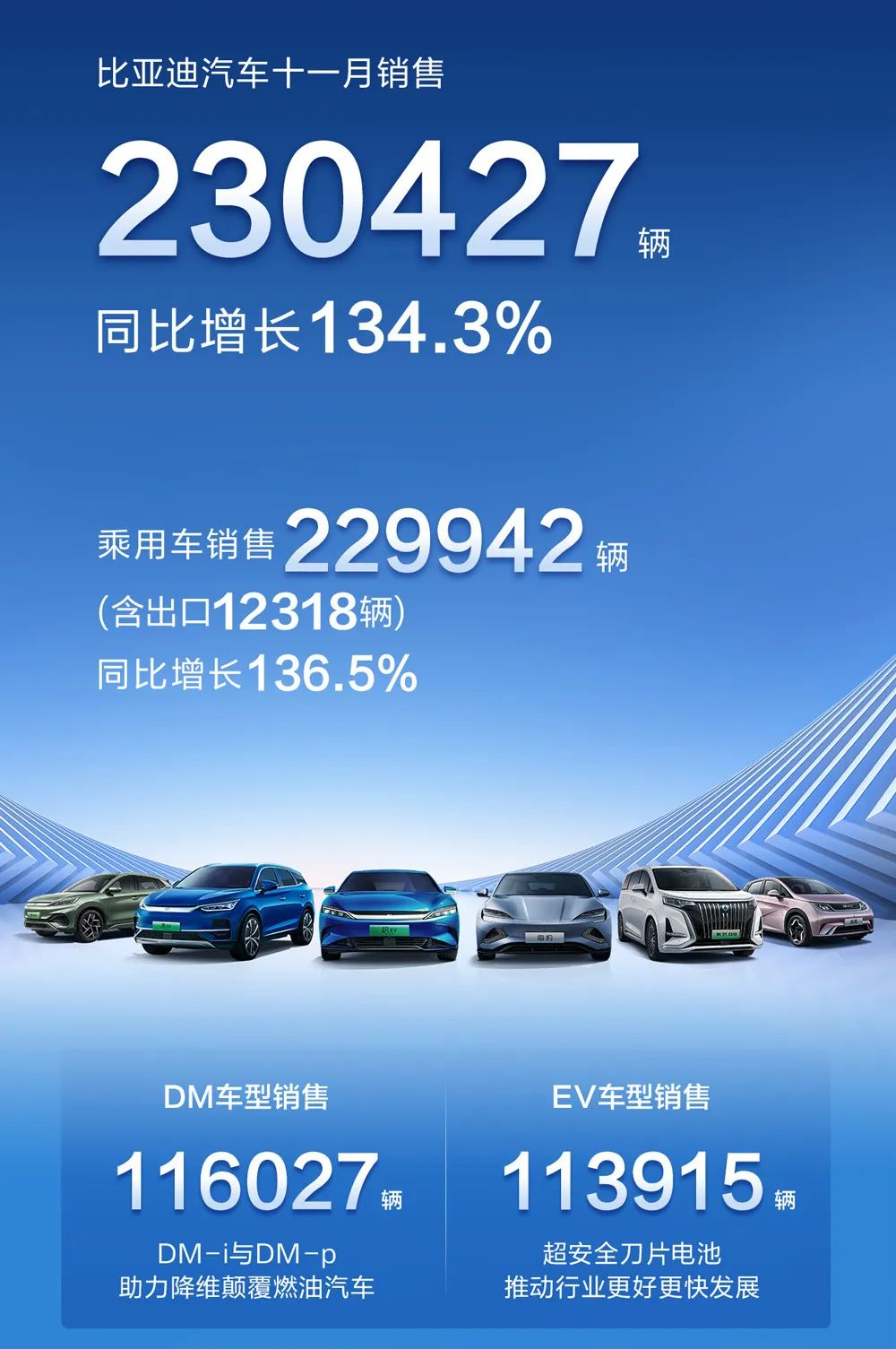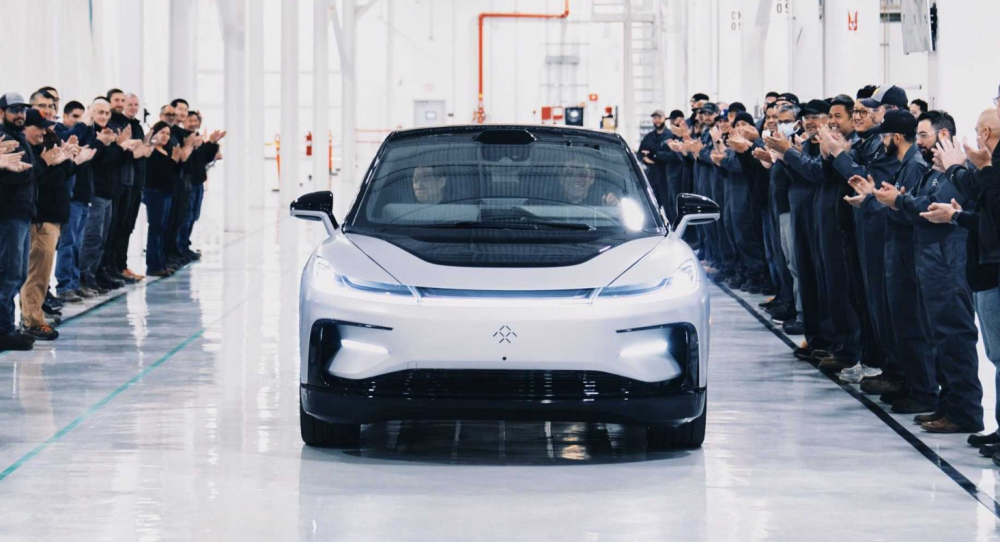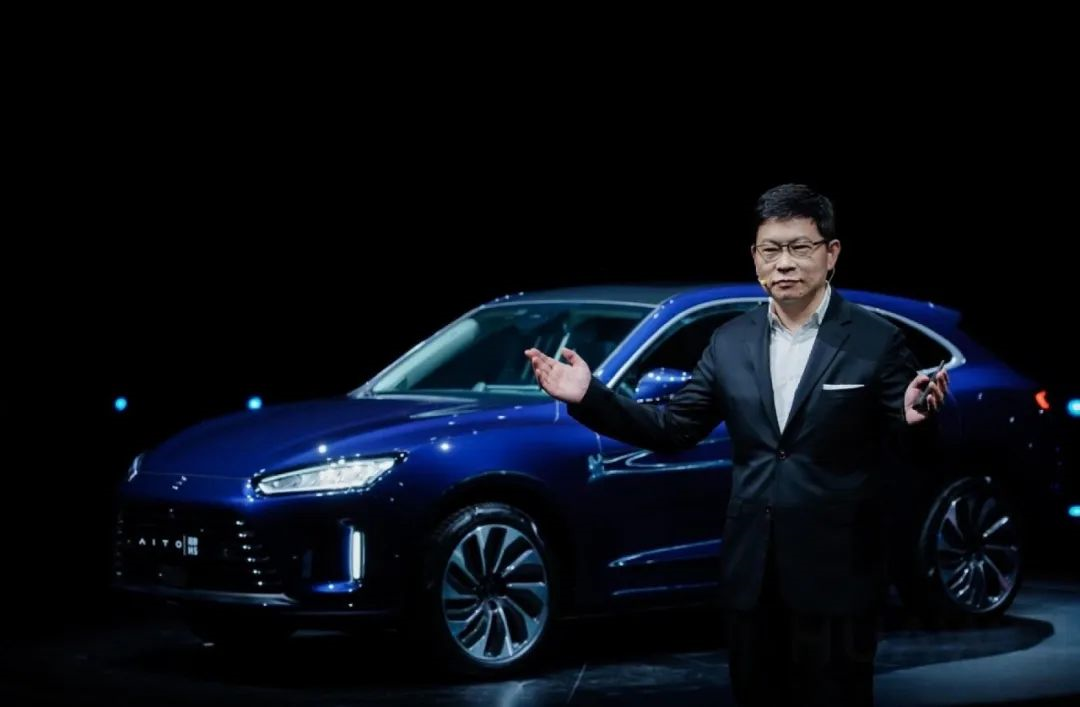Author: Michelin
It’s that time of year again when we prepare annual performance reports.
Reviewing the flags we set at the beginning of the year and setting new KPIs for ourselves for next year may be a task that many cannot avoid, not only working people like you and I, but also those who work in the fast-paced automotive industry, where flags have been made and boasts have been uttered, some of which were done in a high profile manner, and some of which were done in secret, but how many of them have been achieved? How many of them have drifted away with the wind?
With this question in mind, not only did I prepare my own year-end report, but I also prepared a “performance report” for the automotive industry to see if the boasts about smart cars made in the past year have been fulfilled. We also need to remind ourselves, as we are about to set new KPIs for 2023.
Of course, when we talk about “bragging,” most of the time it’s more like setting goals for our own products and brands. Car companies without goals have no future, but car companies with goals won’t be able to move towards the future if they are only all talk and no action.
“Crush Tesla in the First Year”
When it comes to “bragging,” we must mention Yu Chengdong, the leader in this industry, who even outdid himself with his boasts.

At the beginning of the year, when Yu Chengdong delivered the AITO M5 to the market, he made a bold statement that “the AITO M5 will sell 300,000 units in one year.” What’s even more impressive is what he said at an internal meeting, “I hope we will crush them (Tesla) in the first year, and then far surpass them in the second year.”
Obviously, Yu Chengdong underestimated the rules of the automotive industry. In just over three months, he changed his tune, saying, “It’s impossible to achieve 300,000 units with a chip shortage. It will be a miracle if we can complete 100,000 to 200,000 units in the first year.”
Whether it’s 300,000 or 100,000, this goal is difficult for the current AITO M5 to achieve.
Since the large-scale delivery in March, AITO M5 has become a dark horse in the automotive industry this year, with over 10,000 units delivered in three months and over 10,000 units sold in a single month within six months. By November, 66,000 units had been delivered, and it will be easy to achieve more than 70,000 units delivered this year by the end of December. However, this figure is far from the goal set by Yu Chengdong.“`

As a new brand that only debuted at the end of last year, it’s amazing to attract so many users in a few months. This is largely due to the huge sales network of Huawei’s passers-by. Perhaps because of this, in November when offline stores were hit hard by the epidemic, the delivery of the Weltmeister also declined.
It seems that Yu Chengdong’s goal of “surpassing Tesla” still needs to wait.
“ET5 sales will surpass BMW 3 Series within a year”
With the launch of 3 new models, going abroad to Europe, and the sub-brand preheating, 2022 may be the year with the most actions for NIO. The most eye-catching slogan among them may be “within a year, ET5 sales will surpass BMW 3 Series”.

When this slogan was shouted out, the 3 Series had just sold more than 170,000 units within a year, averaging more than 14,000 units per month; while NIO’s brand sales in 2021 were less than 100,000 units. To achieve this goal, it not only requires ET5 itself to break through in a lot of opponents such as BMW 3 Series, Model 3, JiKe 001, etc., but also requires NIO to have the ability to cope with larger markets.
In the just-concluded November, NIO delivered new cars to 14,178 units, of which nearly 3,000 were ET5. Of course, ET5, which started delivery at the end of September, still has 10 months away from the “one-year period”, and October is enough for ET5 to rise rapidly, provided that NIO can solve the internal problems at the fastest speed: the capacity ramp-up of the second factory.

“`Except for ET5, Li Bin set a small sales target for NIO at the beginning of the year: 150,000 vehicles. From January to November, NIO delivered a total of 106,700 vehicles. Even if the production line runs at full capacity in December, it will be difficult to make up for the shortfall of more than 40,000 vehicles. However, it is gratifying that in the deliveries of November, three new cars of the NT2.0 platform reached 11,072 units, accounting for over 78%.
NIO is one of the new forces in the automobile industry that has overcome the threshold of transition from old to new in 2022.
The First Attacker: “Discontinuing Fuel-powered Cars”
BYD has always been in a low-key state of making a fortune without making a sound in the auto circle: although the monthly sales rankings at the beginning of each month always surprise many people, the BYD brand has always been behind the product and rarely speaks out.
However, there are exceptions. For example, BYD announced the discontinuation of fuel-powered cars in early April, almost declaring war on all car companies that plan to discontinue fuel-powered cars by 20xx.

“Discontinuing fuel-powered cars” is not uncommon, especially in European car manufacturers known for environmental protection and sustainability. Almost all of them have set the goal of discontinuing fuel-powered cars and fully electrifying by 20xx. However, BYD is the most decisive. It stopped production in March and announced it in April, and the production line followed the announcement.
For BYD, the decision to discontinue fuel-powered cars is not a boastful slogan, but an important decision. In the month before the discontinuation of fuel-powered cars, pure fuel-powered cars accounted for only 3% of BYD’s monthly sales. The hybrid line represented by DM-i technology has been able to fully replace pure fuel-powered products. Discontinuing fuel-powered cars is more like cutting off a tasteless burden for themselves. This behavior of “discontinuing fuel-powered cars” once again strengthens the label of “new energy” on BYD and strongly associates the new energy vehicle category with the BYD brand.
Sure enough, BYD’s sales have been soaring since the beginning of the year. As of the end of November, BYD’s cumulative sales of new energy vehicles have exceeded 1.62 million, exceeding its own target of selling 1.5 million vehicles per year ahead of schedule.
 ## The Invisible KPI of Tesla: 50%
## The Invisible KPI of Tesla: 50%
There are many KPIs in the automotive industry, some direct and some indirect. For Tesla, Elon Musk’s statement of “selling 20 million electric vehicles” bears the burden of a 50% annual growth rate.
In 2021, Tesla delivered 936,000 vehicles, just one step away from reaching one million annually. However, in 2022, Tesla’s task is not only to cross the million-unit threshold, but to deliver 1.4 million vehicles, an increase of 50% year-on-year.
As of October, Tesla has delivered a total of 1.034 million vehicles, and over 100,000 vehicles were delivered from the Shanghai factory in November. Nevertheless, to achieve the 50% growth target this year, Tesla needs to deliver nearly 200,000 vehicles in December. The ramp-up speed of the new factories in Berlin and Texas not only determines whether Tesla can meet its KPI in the last month of this year but also determines whether Tesla can expand efficiently and effectively next year.

However, compared with sales, there is a bigger suspense about Tesla and Musk, which is FSD (full self-driving). The slogan “promote FSD worldwide in 2022” has been shouted from the beginning to the end of the year. However, it seems that not only China but also other parts of the world have not fully implemented it.
Of course, there have been too many inflated claims about advanced intelligent driving, and we will talk more about this in the next article.
The Love Words of the King of Pigeons in the Automotive Industry: From “Returning to China Next Week” to “See You Next Year”
Speaking of the king of pigeons in the automotive industry, no one else but Jia Yueting. So much so that when I saw the news about the FF91, my first reaction was, “It’s still alive!”
A year ago, in response to the questions raised by short-selling institutions, Jia Yueting replied on WeChat Moments, “Cold food reheated is baseless talk,” and gave a time for the debut: July 2022.
 Some time ago, an FF91 engineering prototype caught fire, and the CEO, who had once declared “off-line for mass production” at the beginning of the year, was dismissed. With less than two weeks left until 2022, the day when FF was supposed to begin production has been pushed back to March 2023. The production time for the FF91 has changed from “see you next week” to “see you next year.”
Some time ago, an FF91 engineering prototype caught fire, and the CEO, who had once declared “off-line for mass production” at the beginning of the year, was dismissed. With less than two weeks left until 2022, the day when FF was supposed to begin production has been pushed back to March 2023. The production time for the FF91 has changed from “see you next week” to “see you next year.”
Although the production plan has been postponed year after year, FF has still managed to improve: for example, the acceleration time from 0 to 100 km/h has been reduced from 2.39 seconds to 2.27 seconds; the cruising range has been increased to 381 miles (613 kilometers); and the car is now equipped with a scanning laser radar and Orin automated driving chips. At least on paper, the FF91 Futurist has not fallen behind in the 2022 smart car competition.

However, FF still needs an infusion of $150 million to make it to next year’s production. I wonder how Jia Yueting, the company’s CEO, always manages to raise money when it’s most needed. I also wonder whether we will see him again at the end-of-the-year “boasting” review next year.
Showing the report card of car companies
In addition to the slogans that have been shouted out, each car company cannot escape the sales KPI assessment. Last year, around the New Year, almost all companies set sales targets for 2022, some of which were conservative, some were bold, and some have been adjusted according to this year’s actual situation.
The completion of these KPIs may be the best comparison between expectations and reality for each company.

Except for the last ten days of December, the sales data of some new energy car companies for the first eleven months of this year have been announced. From the table above, we can see that, except for BYD, which has completed its task, EA, Nio, and Xpeng, whose completion rates have exceeded 90%, can basically rely on the last month to achieve their expected sales target. However, Zeekr, which has completed 85.58% of its target, needs to make a final effort. The other companies are still far from their goals at the beginning of the year.Leaving aside the differences in products and strategies, among the car companies that achieved their targets this year, two growth factors played a significant role: one is the market for electric cars priced around 100,000 RMB that has gained momentum; the other is the booming hybrid market this year.
By leveraging these two growth factors, second-tier new players like Lynk & Co and NIO made it to the top of the new energy vehicle sales charts; while established car manufacturers like BYD and Geely achieved their targets thanks to hybrid technology.
For car companies that still have some distance to go before reaching their targets, in addition to factors such as product positioning and product strength, an internal factor that affects performance is supply chain shortages and production capacity crises.
For instance, WEY, which achieved more than 10,000 monthly deliveries last year, faced challenges with long production ramp-up times when transitioning to new products this year. Meanwhile, when the Ideal brand, whose product line is relatively centralized, focused on ramping up production capacity for its L9 model in August and September, it only released its new L8 model after the L9 achieved 10,000 monthly production capacity. For more complex product lines like NIO and Xpeng, their ET5 and G9 models are still facing difficult production ramp-up phases.
As a benchmark, Jinkang Technology achieved its sales target this year thanks in part to its relatively reasonable targets set in advance, and on the other hand, by improving its production and delivery efficiency at the same time as replacing its core chip components with 8155 chips in July, it allowed Jinkang 001 to experience a smiling curve that went from a high opening to low and then rose again in the market.
Another factor affecting this year’s performance is the supply chain crisis. Compared with the impact of chip shortages, battery shortages, and plant shutdowns caused by the pandemic on the industry as a whole, new energy vehicle companies faced more challenges in the supply chain this year. For example, in July, Li Bin made a public plea by saying “I urge our supplier partners to withstand the pressure!” due to the shortage of large die-cast parts and other components. Last month, Ideal also delayed the delivery of some users who were originally scheduled to receive their cars at the end of November due to the delay in the supply of core components.
Under these circumstances, it has provided an opportunity for independent brands with a big family and a traditional car company background.
The test of production lines and supply chains has brought the play of intelligent cars full circle and back to the fundamental skills of the automotive industry.### The End
2022 can be said to be a year full of ups and downs, from the chip shortage at the beginning of the year to the raw material surge caused by the Russia-Ukraine conflict, from resuming work and production during the pandemic to power restrictions during the summer. In these tests, we have experienced the emergence of new players, the rise of independent brands and the reshuffle of new forces, and this reshuffle will continue into 2023.
Each inventory means the end of a year and also the beginning of a new one. We hope that there will be more “empty talks” realized in the automotive industry next year.
This article is a translation by ChatGPT of a Chinese report from 42HOW. If you have any questions about it, please email bd@42how.com.
